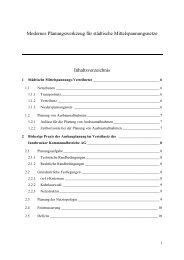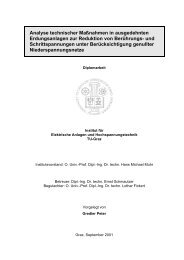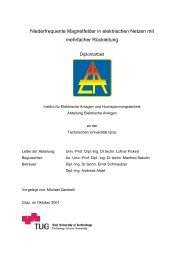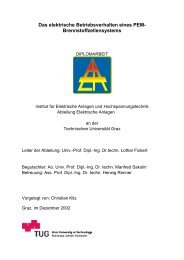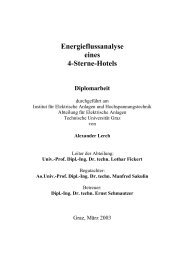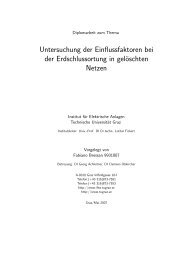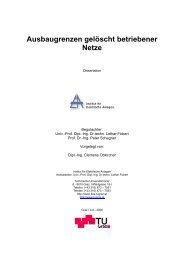Development of a wavelet-based algorithm to detect and determine ...
Development of a wavelet-based algorithm to detect and determine ...
Development of a wavelet-based algorithm to detect and determine ...
You also want an ePaper? Increase the reach of your titles
YUMPU automatically turns print PDFs into web optimized ePapers that Google loves.
6.2. BASIC IDEAS OF THE WAVELET TRANSFORM 45<br />
Scale <strong>and</strong> Frequency Scaling a function simply means stretching or compressing it.<br />
Figure 6.3 shows the effect <strong>of</strong> the scale a. The larger scales correspond <strong>to</strong> the more<br />
"stretched" waves. It is clear that, for a sinusoidal function, the scale a is inverse pro-<br />
portion <strong>to</strong> the frequency ω.<br />
There is a similar relation between the scale <strong>and</strong> the frequency in the <strong>wavelet</strong> trans-<br />
form. The more stretched the <strong>wavelet</strong>, the longer the portion <strong>of</strong> the signal will be<br />
analyzed, <strong>and</strong> thus the coarser or lower frequency features <strong>of</strong> the signal will be mea-<br />
sured by the <strong>wavelet</strong> coefficients. Therefore, there is a corresponding relation between<br />
the <strong>wavelet</strong> scale <strong>and</strong> frequency as following:<br />
• Small scale ⇒ compressed <strong>wavelet</strong> ⇒ rapidly changing detail ⇒ high frequency.<br />
• Large scale ⇒ stretched <strong>wavelet</strong> ⇒ slowly changing, coarse feature ⇒ low fre-<br />
quency.<br />
In other words, frequency is inverse proportional <strong>to</strong> scale. However, the proportion<br />
ratio depends on the mother <strong>wavelet</strong>, sampling frequency <strong>and</strong> the <strong>wavelet</strong> transform<br />
type (CWT or DWT). Figure 6.8(a) shows the relation between frequency <strong>and</strong> scale<br />
with a given sampling frequency. The sampling frequency leads <strong>to</strong> the corresponding<br />
frequency b<strong>and</strong> in different scale levels. Figure 6.8(b) is an example for a sampling<br />
frequency <strong>of</strong> 4,8 kHz. Of course the sampling frequency should fulfil the Nyquist<br />
criteria which depends on the highest frequency <strong>of</strong> the signal.<br />
For obtaining a fixed relation, there is a simple method. [9] The relation can be derived<br />
for a particular <strong>wavelet</strong> function by making the <strong>wavelet</strong> transform <strong>of</strong> a cosine wave<br />
function with a known frequency <strong>and</strong> computing the scale a at which the <strong>wavelet</strong> co-<br />
efficient reaches its maximum. Following this method, the relation between frequency<br />
<strong>and</strong> scale is obtained for the Db4 <strong>wavelet</strong> in form ψ(t) = e −t2 /2 cos(5t):<br />
1<br />
f = kfs<br />
a<br />
1<br />
= 0, 8fs<br />
a<br />
(6.8)<br />
Where f <strong>and</strong> a are corresponding <strong>to</strong> frequency <strong>and</strong> scale, fs denotes sampling fre-<br />
quency in Hz <strong>and</strong> k is a constant which changes solely with function form <strong>of</strong> each




